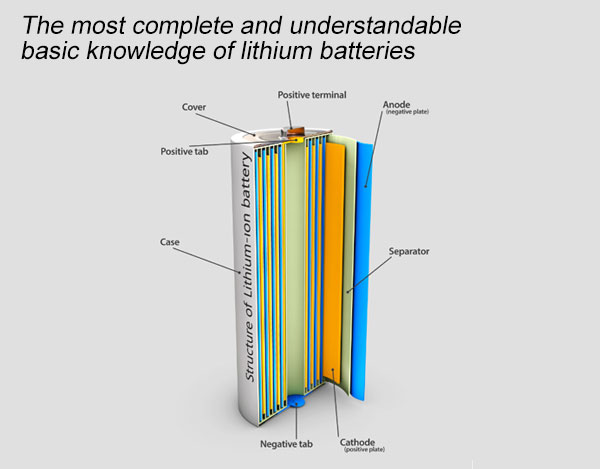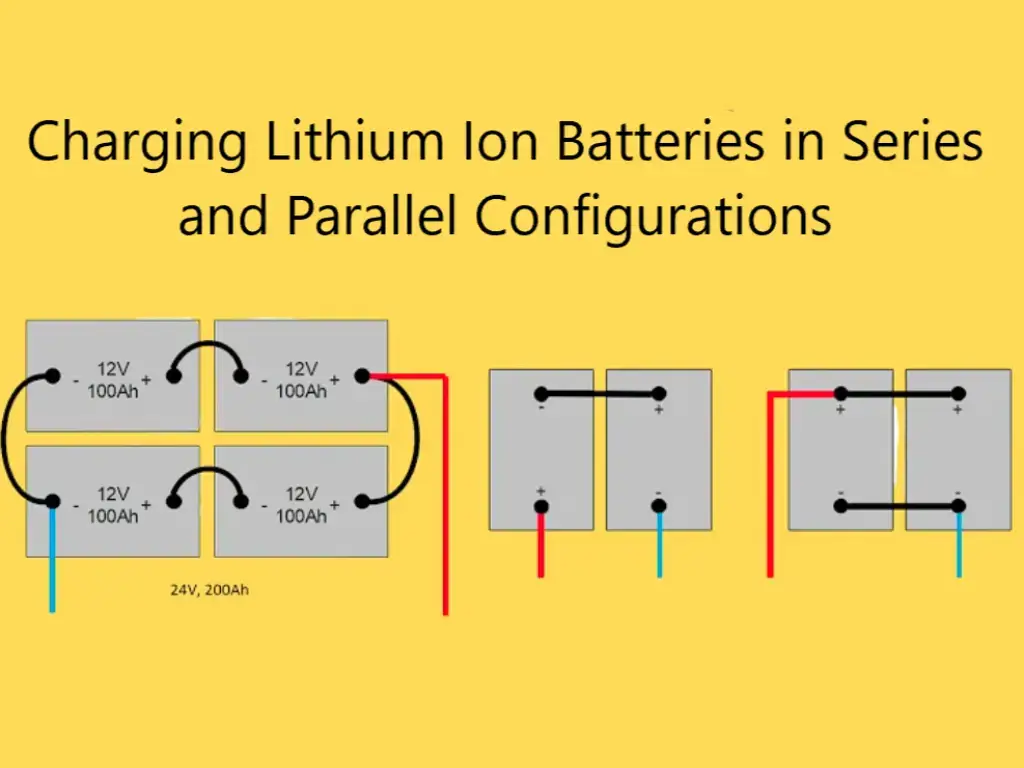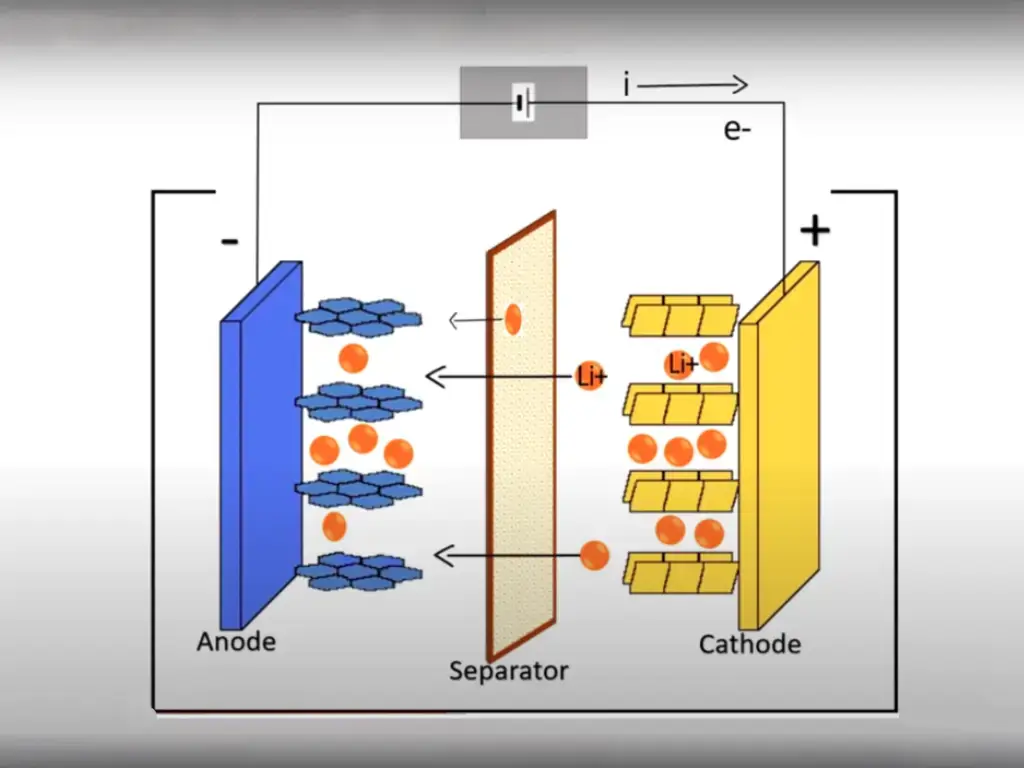
Lithium battery basics
Lithium batteries are rechargeable batteries. Generally, lithium batteries are fully charged with 4.2V and other voltages. The capacity of the lithium battery is xxxmAh, such as 1000mAh, that is, the power supply current of 1000mA can be used for 1 hour. 500mA power supply can be used for 2 hours. So on and so forth.
Lithium battery life and charging method
The life of a lithium battery refers to the limit of the number of times it is fully charged and discharged, commonly known as the number of cycles. Charging method: fast charging, slow charging, trickle charging, constant current charging, etc.
Attentions in lithium battery circuit design
Lithium battery overcharge and overdischarge will affect the battery life.
Pay attention to the charging voltage and charging current of the lithium battery. Then select the appropriate charging chip.
Pay attention to prevent overcharge, overdischarge, short circuit protection and other problems of lithium batteries.
After design, it goes through a lot of testing.
Design of lithium battery charging circuit
Here, the chip TP4056 is selected as an example. The maximum charging current can be controlled according to the connected resistance. The charging indicator light can be designed, and the charging temperature can be designed to charge between how many and how many degrees.
Charging protection circuit, select the combination of chip DW01 and GTT8205, can achieve short-circuit protection, over-charge and over-discharge protection.
The circuit is mainly composed of lithium battery protection special integrated circuit DW01, charge and discharge control MOSFET1 (including two N-channel MOSFETs) and other parts. The single lithium battery is connected between B+ and B-, and the battery pack is connected from P+ and P -The output voltage. When charging, the output voltage of the charger is connected between P+ and P-, and the current goes from P+ to B+ and B- of the single battery, and then goes through the charging control MOSFET to P-. During the charging process, when the voltage of the single battery exceeds 4.35V, the OC pin output signal of the special integrated circuit DW01 turns off the charging control MOSFET, and the lithium battery stops charging immediately, thereby preventing the lithium battery from being damaged due to overcharging. During the discharge process, when the voltage of the single battery drops to 2.30V, the output signal of the OD pin of DW01 turns off the discharge control MOSFET, and the lithium battery stops discharging immediately, thereby preventing the lithium battery from being damaged due to overdischarge. The CS pin of DW01 is The current detection pin, when the output is short-circuited, the conduction voltage drop of the charge-discharge control MOSFET increases sharply, the CS pin voltage rises rapidly, and the DW01 output signal turns off the charge-discharge control MOSFET quickly, thereby realizing overcurrent or short-circuit protection.
What are the advantages of lithium batteries?
High energy density
High working voltage
No memory effect
Long cycle life
No pollution
Light weight
Small self-discharge
What are the advantages of lithium polymer batteries?
1. There is no battery leakage problem, the battery does not contain liquid electrolyte, and uses colloidal solids.
2. It can be made into a thin battery: with a capacity of 3.6V400mAh, its thickness can be as thin as 0.5mm.
3. The battery can be designed in various shapes.
4. The battery can be bent and deformed: the polymer battery can be bent up to about 900 degrees.
5. It can be made into a single high voltage: the battery with liquid electrolyte can only obtain high voltage by connecting several batteries in series. Since the polymer battery itself has no liquid, it can be made into a multi-layer combination in a single cell to achieve high voltage.
6. The capacity will be double that of a lithium-ion battery of the same size
7.IEC stipulates the standard cycle life test of lithium battery?
After the battery is placed at 0.2C to 3.0V, the battery is charged with 1C constant current and constant voltage to 4.2V and the cut-off current is 20mA, and then shelved for 1 hour, and then discharged at 0.2C to 3.0V (one cycle) after repeated cycles for 500 times. % The standard charge retention test for lithium batteries stipulated by the national standard above is (IEC has no relevant standards) after the battery is discharged to 3.0/unit at 0.2C at 25 degrees Celsius, and then charged to 4.2V at 1C constant current and constant voltage, and the cut-off current is 10mA , after being stored for 28 days at a temperature of 20+_5, the discharge capacity was calculated by discharging at 0.2C to 2.75V.
8. What are the different types of self-discharge of secondary batteries, and what is the self-discharge rate of the battery?
Self-discharge, also known as charge retention capability, refers to the retention capability of the battery’s stored power under certain environmental conditions in an open-circuit state. Generally speaking, self-discharge is mainly affected by manufacturing process, materials, and storage conditions. Self-discharge is one of the main parameters to measure battery performance. Generally speaking, the lower the battery storage temperature, the lower the self-discharge rate, but it should also be noted that too low or too high temperature may cause the battery to be damaged and unusable. BYD conventional batteries require a storage temperature range of -20~45. After the battery is fully charged and left open for a period of time, it is normal for a certain degree of self-discharge.
The IEC standard stipulates that after the nickel-cadmium and nickel-metal hydride batteries are fully charged, the temperature is 20 degrees and the humidity is 65%, and the open circuit is put on hold for 28 days, and the 0.2C discharge time is greater than 3 hours and 3 hours and 15 minutes respectively. Compared with other rechargeable battery systems, the self-discharge rate of solar cells with liquid electrolyte is significantly lower, about 10%/month at 25 degrees.
9. What is the internal resistance of the battery? How to measure?
The internal resistance of the battery refers to the resistance received by the current flowing through the battery when the battery is working, and is generally divided into AC internal resistance and DC internal resistance. , resulting in polarization internal resistance, so its true value cannot be measured, but measuring its AC internal resistance can avoid the influence of polarization internal resistance and obtain the true internal value. The AC internal resistance test method is: using a battery is equivalent to a The characteristics of active resistance, give the battery a constant current of 1000HZ, 50mA, and a series of processing such as voltage sampling, rectification and filtering to accurately measure its resistance.
10. What is the internal pressure of the battery, what is the normal internal pressure of the battery?
The internal pressure of the battery is the pressure formed by the gas generated during the charging and discharging process. It is mainly affected by the battery material manufacturing process, structure and other use process factors. Generally, the internal pressure of the battery is maintained at a normal level. In the case of overcharge or overdischarge , the internal pressure of the battery may increase: if the speed of the composite reaction is lower than the speed of the decomposition reaction, the generated gas will not be consumed in time, which will cause the internal pressure of the battery to increase.
11. What is an internal pressure test?
The lithium battery internal pressure test is: (UL standard) to simulate the battery at an altitude of 15240m (low pressure of 11.6kPa) to check whether the battery leaks or bulges.
Specific steps: Charge the battery with 1C constant current and constant voltage to 4.2V, cut-off current is 10mA, and then put it in a low-voltage box with an air pressure of 11.6Kpa and a temperature of (20+_3) for 6 hours, the battery will not explode, Fire, cracks, leaks.
12. How does ambient temperature affect battery performance?
Among all environmental factors, temperature has the greatest impact on the charge-discharge performance of the battery. The electrochemical reaction at the electrode/electrolyte interface is related to the ambient temperature, and the electrode/electrolyte interface is regarded as the heart of the battery. If the temperature drops, so does the reaction rate of the electrodes, and assuming the battery voltage remains constant, the discharge current drops, and the power output of the battery drops. If the temperature rises, the opposite is true, that is, the output power of the battery will increase, and the temperature will also affect the transmission speed of the electrolyte. But the temperature is too high, more than 45, it will destroy the chemical balance in the battery, resulting in side reactions
13. What are the control methods for overcharging?
In order to prevent the battery from being overcharged, it is necessary to control the charging end point. When the battery is fully charged, there will be some special information that can be used to judge whether the charging end point is reached. There are generally the following six methods to prevent the battery from being overcharged:
Peak voltage control:
Determine the end point of charging by detecting the peak voltage of the battery;
dT/dt control:
Determine the end point of charging by detecting the rate of change in the peak temperature of the battery;
T control:
When the battery is fully charged, the difference between the temperature and the ambient temperature will reach the maximum;
-V control:
When the battery is fully charged and reaches a peak voltage, the voltage will drop by a certain value
Timing Control:
By setting a certain charging time to control the charging end point, generally set the time required to charge 130% of the nominal capacity to control;
TCO control:
Considering the safety and characteristics of the battery, charging at high temperatures (except high-temperature batteries) should be avoided, so charging should be stopped when the battery temperature rises by 60°C.
14. What is overcharging and how does it affect battery performance?
Overcharging refers to the behavior of continuing charging after the battery is fully charged after a certain charging process. Since the capacity of the negative electrode is higher than that of the positive electrode in the design, the gas generated by the positive electrode is combined with the cadmium generated by the negative electrode through the separator paper. Therefore, under normal circumstances, the internal pressure of the battery will not increase significantly, but if the charging current is too large, or the charging time is too long, the generated oxygen will not be consumed in time, which may cause the internal pressure to rise, the battery to deform, and to leak. and other adverse phenomena. At the same time, its electrical properties will also be significantly reduced.
15. What is overdischarge and how does it affect battery performance?
After the battery discharges the internally stored power, after the voltage reaches a certain value, continuing to discharge will cause over-discharge, and the discharge cut-off voltage is usually determined according to the discharge current.
0.2C-2C discharge is generally set to 1.0V/piece, and above 3C, such as 5C or 10C discharge, is set to 0.8V/piece. Repeated over-discharge has a greater impact on the battery. Generally speaking, overdischarge will increase the internal pressure of the battery, and the reversibility of the positive and negative active materials will be destroyed.
16. What problems will occur when batteries of different capacities are used together?
If different capacities or old and new batteries are used together, there may be liquid leakage, zero voltage and other phenomena.
This is due to the difference in capacity during the charging process, which causes some batteries to be overcharged during charging, and some batteries are not fully charged. When discharging, some batteries with high capacity are not fully discharged, while those with low capacity are overdischarged. Such a vicious cycle, the battery gets damaged and leaks or has low (zero) voltage.
What is the explosion of the battery and how to prevent the explosion of the battery?
Any part of the solid matter in the battery is instantly discharged and pushed to a distance of more than 25cm from the battery, which is called an explosion. To determine whether the battery exploded or not, the following conditions were used for the experiment. Cover the experimental battery with a net, the battery is in the center, 25cm away from any side of the net. The density of the mesh is 6-7 pieces/cm, and the mesh wire adopts a soft aluminum wire with a diameter of 0.25mm. If no solid part passes through the mesh cover in the experiment, it proves that the battery has not exploded.
17. Lithium battery series connection problem
Since the battery is in the production process, there are many processes from the coating film to the finished product. Even if the voltage, resistance and capacity of each group of power supplies are consistent after strict testing procedures, there will be differences of one kind or another after a period of use.
Like twins born to a mother, who may look exactly the same when they are first born, it is difficult for a mother to tell the difference. However, as the two children continue to grow, there will be differences of one kind or another, and the same will be true of lithium-ion batteries.
After using for a period of time to produce differences, it is difficult to apply the overall voltage control method to lithium power batteries, such as a 36V battery stack, 10 batteries must be connected in series. The overall charge control voltage is 42V, and the discharge control voltage is 26V. With the overall voltage control method, there may not be any problems in the initial use stage because the battery consistency is particularly good. After using for a period of time, the internal resistance and voltage of the battery will fluctuate, forming an inconsistent state. (Inconsistency is absolute, consistency is relative). At this time, it is impossible to use the overall voltage control to achieve its purpose. For example, when 10 batteries are discharged, the voltage of two batteries is 2.8V, the voltage of four batteries is 3.2V, and the voltage of four batteries is 3.4V. Now the overall voltage is 32V, and we let it continue to discharge until it works until 26V. In this way, the two 2.8V batteries are in an over-discharge state below 2.6V. Lithium batteries are discarded after being over-discharged several times. Conversely, if charging is carried out in the way of overall voltage control charging, overcharging will also occur.
For example, use the voltage state of the above 10 batteries at that time to charge. When the overall voltage reaches 42V, the two 2.8V batteries are in a state of “starvation”, and if they absorb power quickly, they will exceed 4.2V, and the overcharged batteries exceeding 4.2V will not only be scrapped due to excessive voltage, but even There are also dangers, which are the characteristics of lithium power batteries.
18. Non-rechargeable lithium batteries
There are many kinds of non-rechargeable lithium batteries, currently commonly used are lithium-manganese dioxide batteries, lithium-thionyl chloride batteries and lithium and other compound batteries. This article describes only the first two most commonly used.
1. Lithium-manganese dioxide battery (Li MnO2) Lithium-manganese dioxide battery is a disposable battery with lithium as anode, manganese dioxide as cathode, and organic electrolyte. The main features of this battery are that the battery voltage is high, the rated voltage is 3V (2 times that of general alkaline batteries); the termination discharge voltage is 2V; the specific energy is large (see the example above); the discharge voltage is stable and reliable; Excellent storage performance (storage time of more than 3 years), low self-discharge rate (annual self-discharge rate ≤ 2%); operating temperature range -20 ℃ ~ +60 ℃. The battery can be made into different shapes to meet different requirements, it has rectangular, cylindrical and button-shaped (button type). Cylindrical ones are also available in different diameter and height dimensions. Here are the main parameters of the familiar 1# (size code D), 2# (size code C) and 5# (size code AA) batteries.
CR represents a cylindrical lithium-manganese dioxide battery; in the five-digit number, the first two digits represent the diameter of the battery, and the last three digits represent the height with one decimal place. For example, CR14505, which has a diameter of 14mm and a height of 50 5mm (this model is universal). It should be pointed out here that the parameters of the same type of battery produced by different factories may be somewhat different. In addition, the standard discharge current value is relatively small, the actual discharge current can be greater than the standard discharge current, and the allowable discharge current of continuous discharge and pulse discharge is also different, and the relevant data is provided by the battery factory. For example, the CR14505 produced by Lixing Power Supply Company gives a maximum continuous discharge current of 1000mA and a maximum pulse discharge current of 2500mA. Most of the lithium batteries used in cameras are lithium-manganese dioxide batteries. The lithium-manganese dioxide batteries commonly used in cameras are listed in Table 2 for reference. Button-type (button-type) batteries are small in size, with a diameter of 125-245mm and a height of 16-50mm. Several commonly used button batteries are shown in Table 3.
CR is a cylindrical lithium-manganese dioxide battery, the first two digits of the last four digits are the diameter of the battery, and the last two digits are the height size with a decimal point. For example, a CR1220 has a diameter of 12 5mm (excluding the number after the decimal point) and a height of 2 0mm. This model representation method is used internationally. Such button batteries are commonly used in clocks, calculators, electronic notepads, cameras, hearing aids, electronic game machines, IC cards, backup power supplies, and the like.
2. Lithium-thionyl chloride battery (Li SOCl2) Lithium-thionyl chloride battery has the highest specific energy, which can reach 500W at present. h/kg or 1000Wh/L level. Its rated voltage is 36V, and it has an extremely flat 34V discharge characteristic when discharged at medium current (it can discharge flatly in the 90% capacity range with little change). The battery can work in the range of -40℃~+85℃, but the capacity at -40℃ is about 50% of the normal temperature capacity. Low self-discharge rate (annual self-discharge rate ≤ 1%) and storage life of more than 10 years. Compare the specific energy of 1# (size code D) nickel-cadmium battery and 1# lithium-thionyl chloride battery: 1# nickel-cadmium battery has a rated voltage of 1 2V and a capacity of 5000mAh; 1# lithium-thionyl chloride battery The rated voltage of the battery is 36V and the capacity is 10000mAh, the specific energy of the latter is 6 times larger than that of the former! Application Precautions The above two kinds of lithium batteries are disposable batteries and cannot be charged (dangerous when charging!); the positive and negative electrodes of the battery Do not short-circuit between them; do not discharge with excessive current (discharge exceeding the maximum discharge current); when the battery is used to the termination of the discharge voltage, it should be taken out of the electronic product in time; the used battery should not be squeezed, incinerated or disassembled; it should not exceed the specified temperature range usage. Since the voltage of lithium batteries is higher than that of ordinary batteries or nickel-cadmium batteries, do not make mistakes when using them to avoid damage to the circuit. By being familiar with the CR and ER in the model, you can know its type and rated voltage. When buying a new battery, be sure to buy it according to the original model, otherwise it will affect the performance of electronic products.
Keheng New Energy’s Range Of Products
- 100AH 12V Low Temperature Heating Enable
- Lithium Battery Cell
- Lithium Battery Pack
- Escooter/Ebike Battery
- 12V/24V Lifepo4 Battery
- Portable Power Station
- ESS Energy Storagy Systems
- Deep Cycle Batteries With BMS
- Low Temperature 24V 60AH Battery




